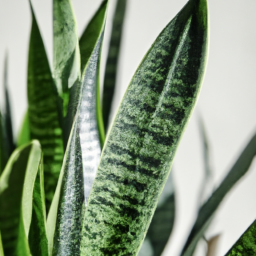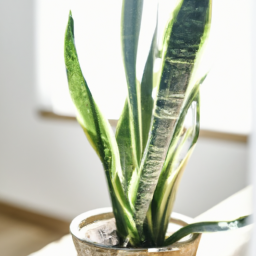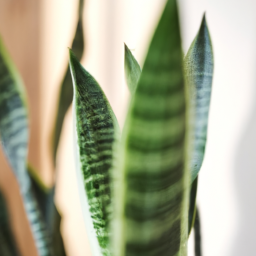
If you’re a proud snake plant owner, you probably already know that finding the right soil type is crucial for the health and growth of your beloved plant. The snake plant soil type plays a significant role in providing the necessary nutrients and drainage for your plant to thrive. Whether you’re a seasoned plant parent or just starting out with your green thumb journey, understanding the best soil type for your snake plant is essential for its overall well-being. In this blog post, we’ll delve into the world of snake plant soil types and explore the different options available to help you make the best choice for your plant. Let’s dig in!
Benefits of Using Well-Draining Soil for Snake Plants
Why is Well-Draining Soil Important for Snake Plants?
When it comes to caring for snake plants, one of the most important factors to consider is the type of soil you use. Snake plants are known for their ability to thrive in a variety of conditions, but they do best in well-draining soil. This type of soil allows for proper aeration and drainage, which are essential for the health and growth of your snake plant.
Well-draining soil helps prevent root rot, a common issue that can occur when soil becomes waterlogged and oxygen is unable to reach the roots. By using well-draining soil, you can ensure that your snake plant’s roots have access to the oxygen they need to thrive. Additionally, well-draining soil helps prevent the buildup of excess moisture, which can lead to fungal diseases and other problems.
In addition to promoting healthy root growth, well-draining soil also helps prevent overwatering. Snake plants are drought-tolerant plants that prefer to dry out between waterings. If you use soil that retains too much moisture, you run the risk of overwatering your snake plant, which can lead to root rot and other issues. Well-draining soil allows excess water to drain away quickly, helping to prevent these problems.
Overall, using well-draining soil for your snake plants is essential for promoting healthy growth and preventing common issues such as root rot and overwatering. By choosing the right soil for your snake plants, you can help ensure that they thrive and continue to bring beauty to your home.
How to Choose the Right Well-Draining Soil for Snake Plants
When selecting soil for your snake plants, it’s important to choose a well-draining option that provides the right balance of moisture retention and aeration. There are a few key factors to consider when choosing soil for your snake plants:
1. Porosity: Look for soil that is porous and allows for good airflow. This will help prevent water from becoming trapped around the roots of your snake plant.
2. Drainage: Choose soil that drains well and does not retain excess moisture. This will help prevent overwatering and promote healthy root growth.
3. Nutrient content: Consider the nutrient content of the soil you choose. Snake plants do not require a lot of nutrients, so a well-draining soil with a balanced nutrient profile is ideal.
When shopping for soil for your snake plants, look for options labeled as “cactus mix” or “succulent mix.” These types of soil are typically well-draining and provide the right balance of moisture retention and aeration for snake plants. Avoid heavy, clay-based soils, as these can retain too much moisture and lead to issues such as root rot.
How to Repot Snake Plants in Well-Draining Soil
If you already have snake plants and want to repot them in well-draining soil, the process is relatively simple. Here’s a step-by-step guide to repotting your snake plants in well-draining soil:
1. Choose a new pot that is slightly larger than the current pot your snake plant is in. Make sure the new pot has drainage holes to allow excess water to escape.
2. Remove your snake plant from its current pot and gently shake off any excess soil from the roots. Inspect the roots for any signs of rot or damage and trim as needed.
3. Fill the bottom of the new pot with a layer of well-draining soil, then place your snake plant in the center of the pot. Add more soil around the sides of the plant, pressing down gently to secure it in place.
4. Water your snake plant thoroughly, allowing excess water to drain out of the bottom of the pot. Place the pot in a bright, indirect light location and allow the soil to dry out before watering again.
By following these steps and using well-draining soil, you can help ensure that your snake plants thrive and continue to bring beauty to your home. Remember to monitor your plants regularly and adjust your watering schedule as needed to keep them healthy and happy.

Choosing the Right Soil Mix for Snake Plants
Welcome to our guide on choosing the right soil mix for snake plants! As an expert in snake plant care, I can assure you that the type of soil you use plays a crucial role in the health and growth of your snake plant. In this article, we will discuss the best soil mix for snake plants, how to prepare it, and some tips for maintaining healthy soil for your beloved plant.
Understanding the Needs of Snake Plants
Before we dive into the specifics of soil mix, it’s important to understand the needs of snake plants. Snake plants, also known as Sansevieria, are known for their resilience and ability to thrive in various conditions. However, they do have some specific requirements when it comes to soil.
Snake plants prefer well-draining soil that is slightly acidic to neutral in pH. They do not like to sit in waterlogged soil, as this can lead to root rot. Additionally, snake plants have shallow root systems, so they do not require deep soil. A loose, well-aerated soil mix is ideal for snake plants to promote healthy root growth and prevent issues such as overwatering.
When choosing a soil mix for your snake plant, look for a well-draining potting mix that is specifically formulated for succulents or cacti. These mixes typically contain a combination of materials such as perlite, sand, and peat moss to create a light and airy texture that allows for proper drainage.
Creating the Perfect Soil Mix for Snake Plants
Now that you understand the needs of snake plants, let’s discuss how to create the perfect soil mix for your plant. To make a suitable soil mix for snake plants, you will need the following ingredients:
1. Succulent or cactus potting mix: This will serve as the base of your soil mix and provide the necessary nutrients for your snake plant.
2. Perlite or coarse sand: These materials will help improve drainage and prevent the soil from becoming compacted. Mix in a generous amount of perlite or sand to ensure proper aeration.
3. Peat moss or coconut coir: Adding peat moss or coconut coir will help retain moisture in the soil without causing it to become waterlogged. This is especially important for snake plants, as they prefer slightly moist soil.
Combine these ingredients in a ratio of 1:1:1 to create a well-balanced soil mix for your snake plant. Make sure to mix the ingredients thoroughly to ensure an even distribution of nutrients and improve soil texture.
Maintaining Healthy Soil for Snake Plants
Once you have prepared the perfect soil mix for your snake plant, it’s important to maintain its health to ensure the continued growth and well-being of your plant. Here are some tips for maintaining healthy soil for snake plants:
1. Water sparingly: Snake plants are drought-tolerant and do not require frequent watering. Allow the top inch of soil to dry out between waterings to prevent overwatering and root rot.
2. Monitor drainage: Check the drainage holes of your plant’s pot regularly to ensure that excess water can escape freely. If you notice water pooling at the bottom of the pot, consider repotting your snake plant in a more well-draining soil mix.
3. Fertilize sparingly: Snake plants are not heavy feeders and can thrive in nutrient-poor soil. Fertilize your snake plant sparingly, using a balanced fertilizer diluted to half strength during the growing season.
By following these tips and guidelines, you can create the perfect soil mix for your snake plant and ensure its continued health and growth. Remember to observe your plant regularly and adjust your care routine as needed to keep your snake plant thriving for years to come!

How to Identify and Prevent Common Soil Issues for Snake Plants
Understanding the Importance of Soil for Snake Plants
When it comes to caring for your snake plants, one of the most crucial aspects is the type of soil you use. The right soil can provide essential nutrients, proper drainage, and a healthy environment for your plants to thrive. However, there are common soil issues that can arise and affect the health of your snake plants. By understanding how to identify and prevent these issues, you can ensure that your plants remain healthy and vibrant.
One of the key factors to consider when it comes to snake plant soil is drainage. Snake plants prefer well-draining soil that allows excess water to flow through easily. If the soil becomes waterlogged, it can lead to root rot and other issues. To prevent this, make sure to choose a well-draining potting mix specifically designed for succulents, or mix in perlite or sand to improve drainage.
Another important aspect of snake plant soil is pH levels. Snake plants prefer slightly acidic to neutral soil, with a pH range of 6.0 to 7.0. If the soil becomes too acidic or alkaline, it can affect the plant’s ability to absorb nutrients. You can test the pH of your soil using a simple soil pH tester, and adjust it as needed with the addition of lime or sulfur.
Identifying Common Soil Issues for Snake Plants
There are several common soil issues that can affect snake plants, including compacted soil, nutrient deficiencies, and pests. Compacted soil can prevent proper root growth and drainage, leading to stunted growth and poor health. To prevent this, make sure to repot your snake plant every 2-3 years to refresh the soil and prevent compaction.
Nutrient deficiencies can also be a common issue with snake plant soil. If your plant is not receiving the proper nutrients, it may show signs of yellowing leaves, slow growth, or poor flowering. To prevent this, make sure to use a balanced fertilizer specifically designed for succulents, and follow the recommended feeding schedule.
Pests can also be a problem with snake plant soil, including mealybugs, spider mites, and fungus gnats. These pests can damage the roots and leaves of your plant, leading to poor health and growth. To prevent pests, make sure to inspect your plant regularly for signs of infestation, and treat with an appropriate pesticide if needed.
Preventing Common Soil Issues for Snake Plants
To prevent common soil issues for your snake plants, it’s important to take proactive measures to ensure the health of your plants. Start by choosing a well-draining potting mix specifically designed for succulents, or mix in perlite or sand to improve drainage. Make sure to repot your snake plant every 2-3 years to refresh the soil and prevent compaction.
In addition, test the pH of your soil regularly to ensure it falls within the optimal range of 6.0 to 7.0. Adjust the pH as needed with the addition of lime or sulfur. Finally, inspect your plants regularly for signs of nutrient deficiencies or pests, and take appropriate action to address any issues that arise.
By following these steps to identify and prevent common soil issues for snake plants, you can ensure that your plants remain healthy and vibrant. With the right soil and proper care, your snake plants will continue to thrive and bring beauty to your home for years to come.
Summary Snapshot
When it comes to caring for your snake plant, choosing the right soil type is crucial for its health and growth. Snake plants, also known as Sansevieria, are hardy and resilient plants that can thrive in a variety of conditions, but the right soil can make a big difference.
Ideally, snake plants prefer a well-draining soil mix that is not too heavy or compact. A good mix for snake plants is one that is a combination of potting soil, perlite, and sand to ensure adequate drainage. Avoid using soil that retains too much moisture, as this can lead to root rot and other issues. By choosing the right soil type for your snake plant, you can help it thrive and grow beautifully in your home or garden.
FAQ Compilation:
Q1. What type of soil is best for snake plants?
A1. Snake plants thrive in well-draining soil that is a mix of potting soil, perlite, and coarse sand. This type of soil allows excess water to drain away from the roots, preventing root rot.
Q2. Can I use regular potting soil for my snake plant?
A2. While regular potting soil can be used for snake plants, it is best to mix it with perlite and coarse sand to improve drainage. This will help prevent overwatering and keep your snake plant healthy.
Q3. How often should I repot my snake plant to refresh the soil?
A3. Snake plants should be repotted every 2-3 years to refresh the soil and provide the plant with fresh nutrients. Be sure to use well-draining soil mix when repotting to promote healthy growth.
Q4. Can I use cactus soil for my snake plant?
A4. Cactus soil can be used for snake plants as it is also well-draining. However, it is recommended to mix it with perlite and coarse sand to ensure optimal drainage and prevent waterlogged soil.
Q5. How can I tell if my snake plant needs to be repotted due to soil issues?
A5. If your snake plant is showing signs of overwatering, such as yellowing leaves or mushy stems, it may be time to repot it with fresh, well-draining soil. Additionally, if the soil is compacted and not draining properly, it may be time to repot your snake plant.
Dr. Olivia Green is a botanist with over two decades of experience in indoor plant cultivation. She holds a Ph.D. in Plant Biology and has dedicated her career to researching plant behavior in controlled environments. Dr. Green is passionate about helping plant enthusiasts master the art of indoor gardening through her extensive knowledge and practical insights.


